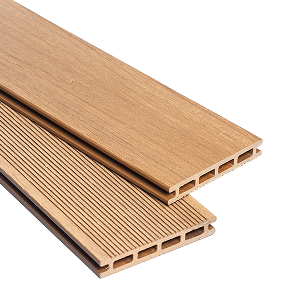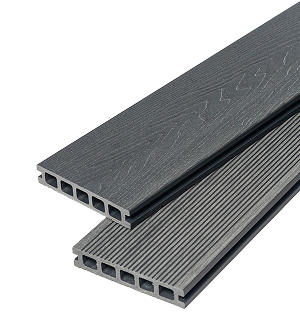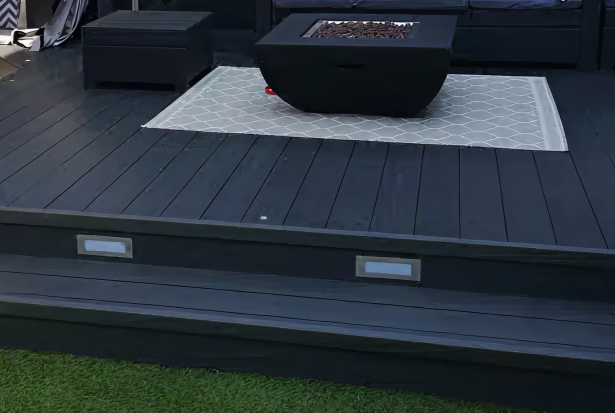 Previous Article
Previous Article
The Ultimate UK Guide to Decking Screws, Nails & Fasteners (2025)


Covering an old deck almost always traps moisture, which dramatically accelerates rot in the hidden structure beneath.
Things like rugs, tiles, and artificial grass are only temporary cosmetic solutions that can hide a growing and dangerous safety hazard.
The only truly safe and financially sound solution is a full replacement. This allows for a critical inspection of the subframe foundation.
As the CEO and Managing Director of Ultra and someone who has spent their entire career as an engineer and working with composite materials for the best part of the last decade, I’ve seen first-hand what works and, more importantly, what doesn’t when it comes to decking.
One of the most common questions I get is whether you can just cover up an old, tired-looking timber deck. It’s a tempting idea – a quick fix to get a fresh new look. However, my experience has taught me that this is one of the biggest mistakes a homeowner can make.
You’re not just hiding an eyesore; you’re often hiding a serious structural problem. Let’s walk through the dangers I see every day and discuss the best way to protect your home and your family.
Here’s the blunt truth: if your decking boards are looking past their best, the subframe beneath them is almost certainly compromised too. In our professional experience, inspecting hundreds of decks over the years, we find that over 90% of decks with worn-out boards have significant underlying issues with their subframe.
When you lay any covering—be it tiles, a rug, or artificial grass over old timber, you create a trap. Rainwater and humidity inevitably get sealed in between the new layer and the old wood. With no way to evaporate, this trapped moisture creates a dark, damp, and stagnant environment.
This is the perfect breeding ground for aggressive rot, mould, and fungi.
Far from solving the problem, the covering can dramatically speed up the decay of your deck’s foundation, turning a cosmetic issue into a costly safety hazard.
Just last year, we were called to a home in Cheshire where the owner had laid beautiful tiles over their old pine deck. From the surface, it looked perfect. But when a chair leg went straight through a tile, we discovered the original subframe had almost completely turned to mulch. It was a shocking and expensive lesson in what can happen in just a couple of seasons.

A stylish rug can add colour, but it acts like a sponge. Even polypropylene rugs that don’t absorb water will trap it underneath. To avoid issues, you would need to lift the rug after every rainfall to let the deck dry, which is highly impractical.
These click-into-place tiles give you an instant new surface. However, they do nothing to solve the problem of the rotting boards and joists underneath. The decay will continue to spread, unseen and unchecked, until the structure becomes dangerously unstable.
This is a very risky option. Artificial grass requires perfect drainage, which is impossible when laid over solid decking boards. Water will get trapped between the plastic mat and the timber, creating a swamp-like effect that will destroy the wood below in record time.

I completely understand the desire for a simple, budget-friendly solution. However, spending money on a temporary cover for a failing deck is a false economy. The only truly safe and responsible solution is to replace the old boards.
Taking up the old decking allows you to do the single most important job: fully inspect the subframe. This is your one chance to check the joists for softness, rot, or damage and ensure the foundation of your new deck is solid, secure, and built to last. A beautiful new surface on a crumbling frame is an accident waiting to happen.
For a detailed guide on this process, our article on replacing a wooden deck with composite decking is an excellent resource.

In my professional opinion, high-quality capped composite decking is the best investment a UK homeowner can make. Unlike wood, it is engineered to be impervious to the British weather. Our products meet rigorous UK standards and come with extensive warranties because they are designed to:
Covering an old deck almost always traps moisture, which dramatically accelerates rot in the hidden structure beneath.
Things like rugs, tiles, and artificial grass are only temporary cosmetic solutions that can hide a growing and dangerous safety hazard.
The only truly safe and financially sound solution is a full replacement. This allows for a critical inspection of the subframe foundation.

 Previous Article
Previous Article
The Ultimate UK Guide to Decking Screws, Nails & Fasteners (2025)

Decking Ideas For Your Garden